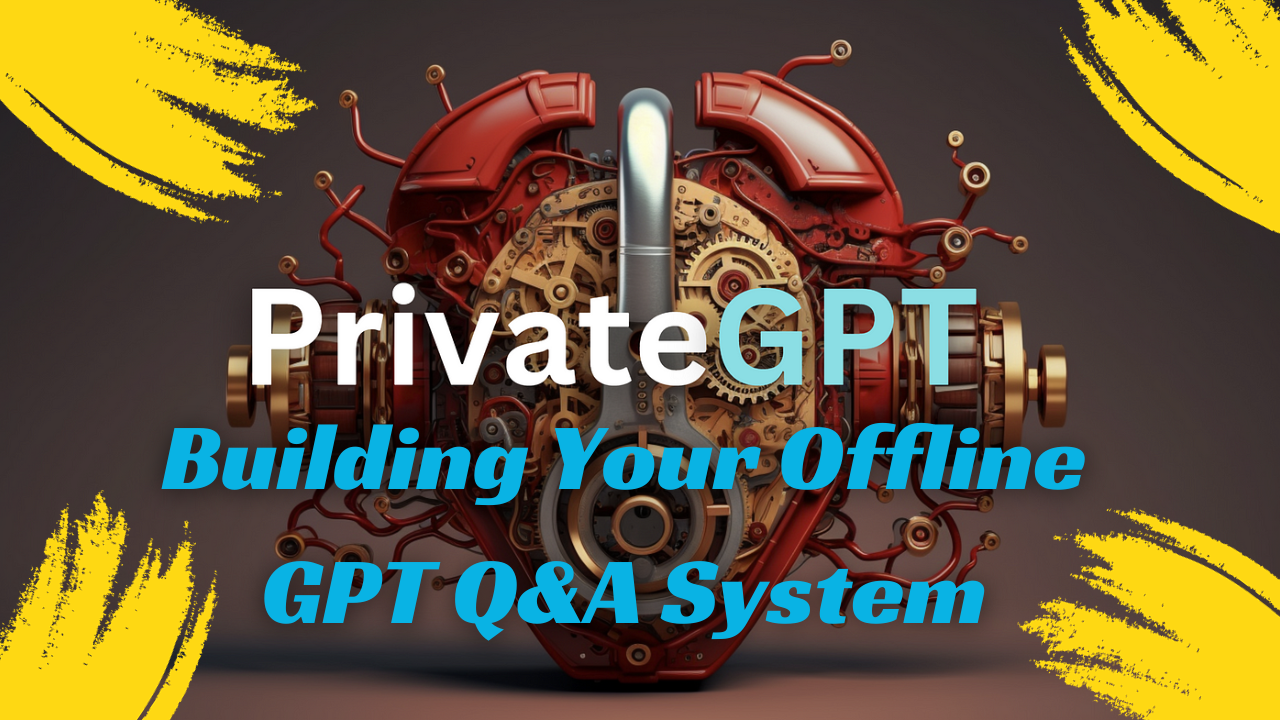PrivateGPT Walkthrough: Building Your Offline GPT Q&A System
Unlock the power of privateGPT, an offline alternative to online language models, with this comprehensive blog post. Learn how to create your own secure GPT Q&A system through a detailed code walkthrough. Dive into the ingestion pipeline, covering file identification, document splitting, embedding, and vector database storage. Explore the Q&A interface, loading vector databases, using pre-trained LLMs, and generating responses. Discover the privacy-first features and continuous improvements that make privateGPT a standout choice. Follow the easy steps to get started and experience the seamless world of secure and personalized AI interactions.
PrivateGPT, PrivateGPT Walkthrough
Introduction: PrivateGPT Walkthrough
Large Language Models (LLMs) have become integral to natural language processing, with OpenAI's GPT-3.5 leading the way. However, concerns about data privacy and control have prompted the development of offline alternatives, such as the PrivateGPT repository. In this blog post, we'll provide a comprehensive walkthrough of creating your own offline GPT Q&A system using privateGPT.
What is privateGPT?
PrivateGPT addresses data privacy concerns associated with online language models like OpenAI's chatGPT. It offers a fully offline alternative, allowing users to leverage LLM capabilities without compromising data privacy or risking data leakage. Built using open-source tools and technology, privateGPT ensures secure interactions with personal documents.
Running privateGPT Locally
To run privateGPT locally, follow these steps:
Installation: Install the necessary packages and configure specific variables.
Knowledge Base: Provide your knowledge base for question-answering purposes.
Execution: Run privateGPT by calling the privateGPT.py file:
bash
Copy code
python privateGPT.py
Receive responses that mention the sources consulted for context.
Code Walkthrough
privateGPT's code is divided into two pipelines:
1. Ingestion Pipeline
1.1 Identifying and Loading Files
The process starts by identifying files with various extensions in the source directory. Each file extension is mapped to a document loader, enabling diverse document support.
1.2 Splitting Documents into Chunks
Documents are split into smaller chunks based on defined parameters like chunk_size and chunk_overlap.
1.3 Initializing the Embedding Model
The HuggingFaceEmbeddings module of langchain is initialized, involving loading a pre-trained language model from the sentence_transformers library.
1.4 Embedding and Saving in the Vector Database
The document chunks are embedded using the initialized model, and the embeddings, along with the chunked text, are stored in the Chroma vector database.
2. Q&A Interface
2.1 Loading the Vector Database
The vector database is loaded, prepared for retrieval tasks, and set in retrieval mode.
2.2 Loading a Pre-trained Large Language Model
A pre-trained LLM (GPT4All) is loaded, specifying the model path, context size, backend, and other parameters.
2.3 Prompting User Query and Generating Response
The RetrievalQA pipeline is employed to prompt the user with a query, generate a response using the LLM and retrieve relevant source documents.
Conclusion: PrivateGPT Walkthrough
PrivateGPT, developed by Ivan Martinez, offers a privacy-first approach to building context-aware AI applications. With continuous improvements, enhanced document format support, and robust features, PrivateGPT stands out for secure and personalized AI interactions.
Getting Started with PrivateGPT
Setting up PrivateGPT is straightforward. Follow these steps in your terminal:
bash
Copy code
# Install PrivateGPT
pip install privateGPT
# Run PrivateGPT
privateGPT run
Enjoy the seamless and intuitive experience of working with PrivateGPT, empowering you to create private and context-aware AI applications without compromising data security.
Frequently Asked Questions (FAQs): PrivateGPT Walkthrough
What is privateGPT?
privateGPT is an offline alternative for interacting with Large Language Models (LLMs) like GPT-3.5. It prioritizes data privacy and control by allowing users to engage with personal documents without compromising sensitive information.
How does privateGPT ensure data privacy?
privateGPT operates entirely offline, eliminating concerns about data leakage. It enables users to leverage LLM capabilities while maintaining control over their data.
How do I run privateGPT locally?
To run privateGPT locally, follow these steps:
Install the required packages.
Configure specific variables.
Provide your knowledge base for question-answering.
Execute the python privateGPT.py command.
Can you explain privateGPT's code walkthrough?
Certainly! The code walkthrough covers the ingestion pipeline and Q&A interface. It includes steps for identifying files, splitting documents, initializing embeddings, and storing data in a vector database. The Q&A interface involves loading vector databases, using pre-trained LLMs, and generating responses.
What file formats does privateGPT support?
privateGPT supports various document formats, including PDF, DOCX, HTML, TXT, and more. The code includes mappings for file extensions and corresponding loaders.
Tell me more about the privacy features of privateGPT.
privateGPT follows a privacy-first approach. It facilitates the creation of fully private, personalized, and context-aware AI applications without sending private data to third-party LLM APIs.
How can I integrate privateGPT into my projects?
privateGPT offers both High-level and Low-level APIs, making integration seamless. The High-level API simplifies tasks like document ingestion and chat completion, while the Low-level API caters to advanced users for building complex AI pipelines.
What improvements have been made to privateGPT over time?
privateGPT has undergone continuous enhancements, including improved support for document formats, enhanced performance, GPU support, expanded model options, and comprehensive code, API, and UI improvements.
Is privateGPT a drop-in replacement for OpenAI's API?
Yes, privateGPT aligns with the OpenAI API standard, making it a convenient drop-in replacement. It offers a similar High-level API for simplified tasks and a Low-level API for advanced users.
How do I get started with privateGPT?
Follow the guide provided in the blog post. Set up privateGPT in your terminal, and start exploring the capabilities of this secure and intuitive offline language model.
Written by: Md Muktar Hossain


























